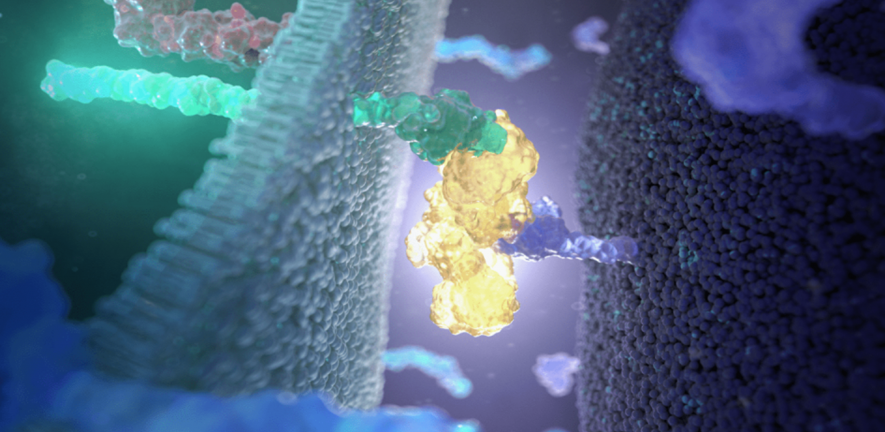
New research, published in Immunity by the Klenerman (University of Cambridge), Davis (MRC TIDU), and Cornall (MRC TIDU, NDM) groups, has uncovered how antibodies trigger immune receptors in T cells.
Communication between cells relies on the transmission of signals through receptors embedded in the cell surface. Specialised white blood cells called T cells have receptors on their surface that can influence how they behave during an immune response. It’s long been known that antibodies, when used like drugs, can activate these “immune receptors” to produce signalling, but not why they can do this.
Some immune receptors are inhibitory. Therefore, antibodies that trigger these receptors can switch off unwanted immune responses, for example in autoimmune diseases. On the other hand, using antibodies to block signalling by immune receptors has become a very important part of immunotherapy. Antibodies against molecules like PD-1 and CTLA-4 have revolutionized cancer immunotherapy.
In this new study, researchers led by Dr Anna Lippert (Klenerman Group) and Dr Chris Paluch (Davis and Cornall Groups) have determined the mechanism by which these activating (or ‘agonist’) antibodies trigger immune receptors. Their work extends a principle of receptor triggering proposed in 2006 by Professor Simon Davis and Professor Anton van der Merwe (Sir William Dunn School) in Oxford.
According to this idea, called the kinetic-segregation (KS) model, the key immune receptor in T cells (the T cell receptor or TCR) is regulated by a balance between kinases (activating molecules) and phosphatases (deactivating molecules). Phosphatases, such as CD45 are much larger than the TCR and kinases. This means that when the TCR is in close contact with its interacting partner the large CD45 phosphatase is physically pushed aside. This exclusion of the phosphatase results in an increase in TCR signalling by “taking the brakes off” kinase activity.
This latest research reveals that the best agonist antibodies are the ones that are most effective at pushing aside phosphatases, which enhances signalling through the immune receptors. The dimensions of these antibodies are therefore crucial in determining their effectiveness. This finding has major implications for how antibodies for immune molecules should be designed.
The study authors suggest that, with this new knowledge, it could be possible to manipulate any receptor whose signalling is restricted by bulky phosphatases. This would allow researchers to change the behaviour of T cells and other immune cells. In this study it was also found that some anti-PD-1 blocking antibodies currently in clinical use for cancer immunotherapy exclude phosphatases and can act as agonists in some settings. Therefore, this research could also, in principle, be a promising avenue for possibly enhancing the performance of even these antibodies.
Professor Davis said: “This very strong team effort has solved quite a few puzzles about the effects of antibodies on the immune system. Antibodies are already tremendously useful as drugs, and we hope that this new understanding further extends their therapeutic potential.”
Professor Sir David Klenerman, a Royal Society GSK research professor at the University of Cambridge who worked on this research, said: “This work shows how by applying physical methods to a fundamental biological process, it is possible to directly image how antibodies alter the immune response. This insight can be used to design more effective antibodies.”
This research is an example of how a fuller understanding of the functions of proteins can be strategically applied to create new and better therapies.
This article was originally published by the MRC Weatherall Institute of Molecular Medicine at the University of Oxford.

